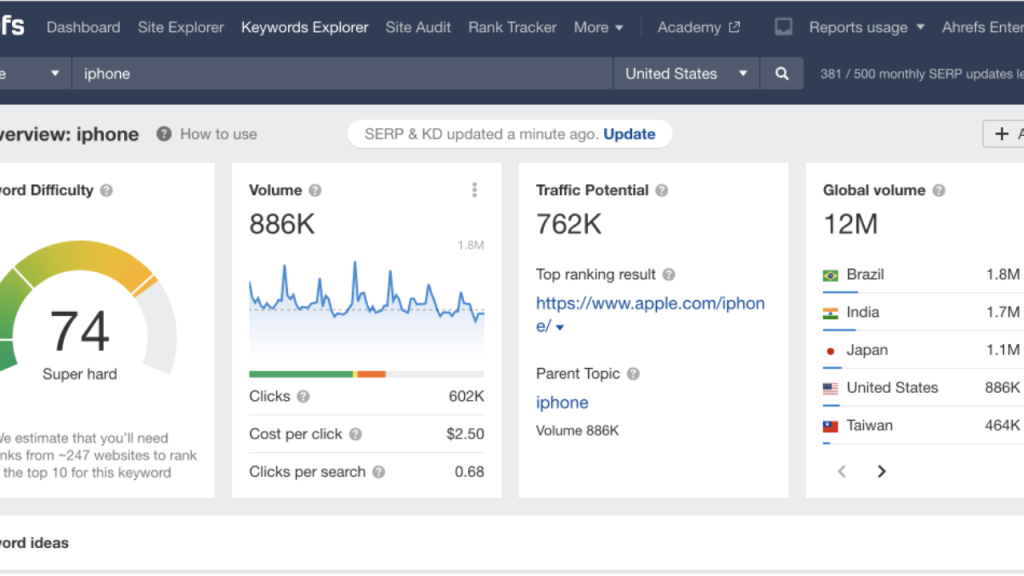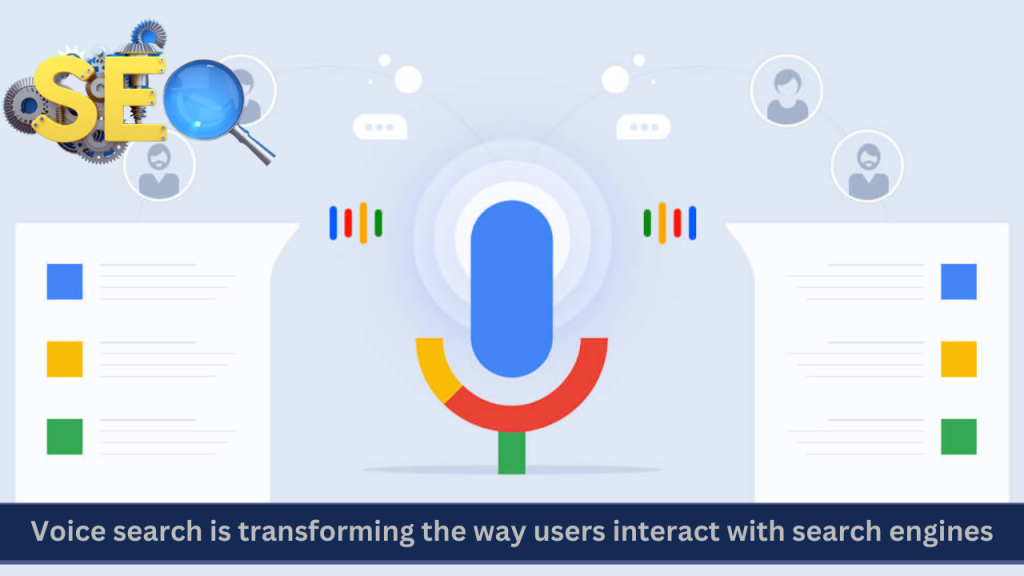In the vast and ever-evolving era of digital marketing, knowing how to increase organic traffic to your site is one term that stands out as a beacon of hope for website owners and marketers.
If you are expecting a quick solution to increase website traffic, going organic is not a suitable choice and tactic for you. It requires hard work and patience to achieve results. Choosing organic traffic-boosting strategies can be the best investment for your brand website.
Imagine a steady stream of visitors finding their way to your brand website without you having to spend a fortune on ads. That’s the magic of organic traffic – the heartbeat of online success.
In this article, we’re set to educate you on how to increase organic traffic to your site. Whether you’re an enterprising innovator launching a fresh site or a seasoned digital marketing guru, these tactics have been meticulously crafted to provide you with the weaponry and enlightenment necessary to master the realm of organic search and enhance your digital footprint.
Listen to the audio version of this article and learn how to increase your organic traffic in just 15 minutes.
Understanding the Significance of Organic Traffic
Picture this: a virtual crowd pouring into your website, not because you coerced them with flashy ads, but because your content speaks to them. This is the allure of organic traffic – the heart and soul of digital authenticity.

But why is it so vital? Organic traffic is the genuine recognition of your website’s relevance by search engines. When a user searches for something related to your niche, and your website emerges as a solution, it’s like receiving a nod of approval from the digital universe.
Before we embark on this journey through the intricacies of boosting organic traffic, let’s glimpse at the roadmap that awaits. From understanding the essence of organic traffic to mastering the art of keyword research and content creation, we’ll cover it all.
Differentiating Organic Traffic from Paid Traffic: Organic traffic is the wine that gets better with time – it’s earned naturally, without the injection of ad money. On the other hand, paid traffic is like renting a billboard for instant visibility – but once the rental ends, the spotlight fades.
Read Also: Win Big in 2023: 5 Proven Marketing Strategies to Boost Sales
12 Easy Ways: How to Increase Organic Traffic to Your Site
1. Do Keyword Research and Optimization
The Significance of Keywords: Imagine keywords as the trailblazers that direct search engines and visitors to your virtual threshold. Picking the correct ones can be the linchpin of your organic traffic approach, determining its success or failure.
Engage in Finding Relevant Keywords: Embark on finding relevant hidden keywords. Tools and platforms such as Google Keyword Planner and SEMrush serve as your navigational charts. Discover keywords boasting substantial search volumes while keeping competition at bay, and you’ll be on the path to success.

The journey to mastering the skill of drawing visitors to your website begins with crafting excellent content. Focusing on long-tail keywords during your keyword investigation can dramatically enhance the influx of natural traffic.
Crafting high-quality content is just the starting point when it comes to mastering the art of attracting visitors to your website. By prioritizing long-tail keywords during your keyword research, you can significantly increase the flow of organic traffic to your site.
Keyword Optimization in Content: Once you’ve gathered your keywords, it’s time to sprinkle them naturally throughout your content. But remember, like spices in a dish, moderation is key.
2. Quality Content Creation
Creating Valuable and Relevant Content: Content is the heart of your website. It’s not just about stuffing keywords; it’s about providing value, solving problems, and addressing your audience’s needs.
Incorporating Keywords Naturally: Keywords should blend seamlessly with your content. Think of them as the thread weaving the fabric of your narrative.
Importance of User Intent in Content: Understanding what users are looking for is like having a crystal ball. Cater to their intent, and you’ll forge connections that last.
5 tips on creating quality content:
- Know your audience. What are their pain points? What are they interested in? What kind of content do they consume? Once you understand your audience, you can tailor your content to their needs and interests.
- Do your research. Before you start writing, make sure you have a good understanding of the topic you’re covering. This means reading other articles, watching videos, and talking to experts. The more research you do, the more informed and authoritative your content will be.
- Be clear and concise. Get to the point quickly and avoid using jargon or technical terms that your audience may not understand. Use clear and concise language that is easy to read and understand.
- Be engaging. Use storytelling, humor, and other techniques to make your content more engaging and interesting to read. You want your audience to be excited to read what you have to say.
- Proofread your work. Before you publish your content, make sure to proofread it carefully for any errors in grammar, spelling, or punctuation. You want to make sure your content is polished and professional.
3. On-Page SEO Techniques
On-page SEO techniques are the things you can do to optimize your website’s pages for search engines. This includes optimizing your content, title tags, meta descriptions, images, and other elements of your pages.

5 tips on creating on-page SEO techniques:
- Optimize your title tags and meta descriptions. Meta tags are the virtual invitations that users see before entering your site. Craft enticing titles, descriptions, and headers that not only attract clicks but also reflect your content accurately.. Make sure they are clear, concise, and relevant to your content. You should also include your target keyword in your title tag and meta description but avoid keyword stuffing.
- Use relevant keywords throughout your content. Your content should be naturally keyword-rich but avoid keyword stuffing. Use your target keyword in the first 100 words of your content, and throughout the rest of your content, but don’t overdo it.
- Using Descriptive URLs: URLs are like street signs. Make them clear, concise, and descriptive so users and search engines know exactly where they’re headed.
- Optimize your images. Images can be a great way to break up your content and make it more visually appealing. However, you also need to optimize your images for SEO. Use descriptive alt text and file names for your images, and make sure your images are properly sized and compressed.
- Build internal links. Internal links are links from one page on your website to another page on your website. Internal links help search engines understand the structure of your website and the relationships between your pages. When building internal links, make sure to link to relevant pages on your website.
Read Also: Why Do SEO in Real Estate? 12 Ways to Get Inflow of Prospects
4. Technical SEO Considerations
Technical SEO entails the meticulous optimization of the technical components of a website with the objective of facilitating search engine crawling, indexing, and comprehension. This encompasses critical aspects such as website architecture, page speed, mobile usability, and structured data.
The practice of technical SEO involves the strategic enhancement of a website’s technical elements to ensure enhanced accessibility and comprehensibility for search engines. This encompasses various factors including website structure, page loading speed, mobile-friendliness, and the implementation of structured data.

Site Speed and Performance: Nobody likes waiting. A slow website is like a sluggish turtle in a race. Speed it up, and visitors will thank you for prolonged stays.
Mobile Responsiveness: With the mobile revolution, your website should be as comfortable on a smartphone as it is on a desktop. Mobile-friendly sites not only please users but also earn brownie points with search engines.
Structured Data and Schema Markup: Think of structured data as the subtitles of your website. Schema markup adds context to your content, helping search engines understand what you’re offering.
Read Also: 7 Ultimate Solutions to Your Website’s Indexing Issues
5. Backlink Building Strategies
Earning High-Quality Backlinks: Backlinks are like recommendations from your peers. Earning them from reputable sources adds credibility to your website.
Guest Posting and Outreach: Imagine attending a party and making connections. Guest posting is the digital equivalent. Contributing valuable insights to other websites can earn you links back to your own.
Monitoring and Disavowing Harmful Links: Just as you wouldn’t want a bad apple in your basket, you wouldn’t want harmful links tarnishing your backlink profile. Regularly audit and disavow links that could harm your SEO efforts.
6. User Experience and Engagement
Enhancing User Experience (UX): Imagine walking into a store where everything is neatly organized and easy to find. That’s the experience users should have on your website.
Decreasing Bounce Rates: High bounce rates are like guests leaving a party before even tasting the appetizers. Engaging content, user-friendly design, and fast load times can reduce this phenomenon.
Implementing Effective CTAs: Calls to action (CTAs) are like road signs that guide visitors to their destinations. Clear and persuasive CTAs can nudge users toward desired actions.

7. Social Media Integration
Harnessing the Power of Social Media Platforms: Social media serves as a digital meeting point, where individuals converge to converse, deliberate, and acquire knowledge. Employ these platforms to disseminate your content globally and ensure your message resonates across the digital landscape.
Sharing Content for Wider Reach: Social media amplifies your voice. When your content resonates with users, they share it, extending its reach beyond your immediate audience.
Social Signals’ Impact on SEO: Just as a buzzing restaurant attracts curious diners, a vibrant social media presence sends positive signals to search engines, potentially boosting your SEO efforts.
Read Also: Why is SEO Important to Businesses? 17 Vital Growth Tips
8. Local SEO Tactics
Optimizing for Local Search: Local SEO stands as a vital component for enterprises seeking visibility among individuals searching for their offerings in proximity. If someone looks up “coffee shops near me,” your website should ideally emerge as one of the initial results they encounter.
Google My Business Optimization: If your website is a storefront, Google My Business is the digital signboard. Optimize it with accurate information, images, and customer reviews.
Encouraging Customer Reviews: Positive reviews are like applause for your online performance. They not only boost your credibility but also attract potential customers.
9. Regular Content Updates
Importance of Fresh Content: Imagine a garden that’s continuously blooming. Fresh content keeps your website alive and relevant, signaling to search engines that you’re active and engaged.
Revamping Old Content: Just as vintage fashion makes a comeback, your old content can shine anew with updated information, visuals, and insights.
Consistency in Content Publishing: Imagine a TV show that keeps viewers hooked with regular episodes. Consistency in content publishing not only keeps your audience engaged but also gives search engines a reason to visit your site frequently.
10. Monitoring and Analytics
Utilizing Google Analytics: It’s like having a dashboard for your website’s performance. Google Analytics provides insights into user behavior, traffic sources, and more.

Tracking Keyword Rankings: Imagine gauging your popularity in real-time. Tracking keyword rankings lets you know where you stand in search results and helps you adapt your strategies accordingly.
Adapting Strategies Based on Data: Data is the compass that guides your digital ship. Analyze the information you gather from tools like Google Analytics to make informed decisions about what’s working and what needs improvement.
11. Optimize Your Webpages for Voice Search
Rise of Voice Search: Imagine asking your virtual assistant for a recipe while cooking. Voice search is transforming the way users interact with search engines, and optimizing for it is the next frontier.
Conversational Keywords and Phrases: Think of how you speak versus how you type. Voice searches tend to be more conversational. Target long-tail keywords and phrases that align with natural speech patterns.
Structuring Content for Voice Search: Imagine your content as a friendly conversation partner. Structure it in a way that directly answers common questions users might ask their virtual assistants.

Tips on how to optimize your web pages for voice search:
- Target long-tail keywords and question keywords. Voice search queries are often more conversational and specific than text-based search queries. By targeting long-tail keywords and question keywords, you can increase your chances of ranking high in voice search results.
- Use conversational language in your content. When writing your content, keep in mind that it will likely be read aloud by a voice assistant. Use natural language and avoid jargon and technical terms.
- Prioritize local SEO. If your business has a physical location, be sure to optimize your website for local search. This will help your website rank higher in voice search results for queries that include your location.
- Try to capture Google-featured snippets. Featured snippets are short snippets of text that appear at the top of search results for certain queries. They often contain the answer to the user’s question, and they can be a great way to attract traffic from voice search users.
- Use schema markup. Schema markup is a type of code that you can add to your website to help search engines understand your content better. This can help your website rank higher in search results, including voice search results.
- Optimize for mobile. More and more people are using voice search on their mobile devices. Make sure your website is optimized for mobile so that users can easily find the information they’re looking for.
- Keep your site fast. Voice search users expect quick and responsive results. Make sure your website loads quickly so that users don’t get frustrated and abandon your site.
12. Create Video Content for SEO
Growing Popularity of Video Content: Imagine being able to show, not just tell. Videos are engaging, entertaining, and increasingly favored by users and search engines.
Optimizing Video Descriptions and Tags: Just as a well-crafted movie trailer entices viewers, your video’s description and tags should be compelling and relevant. This helps search engines understand your video’s content.
Hosting Videos on YouTube for SEO Benefits: Imagine having a second home for your videos. YouTube, being the second-largest search engine, offers SEO benefits. Optimize your video titles, descriptions, and tags for better visibility.
Expanding your content strategy to include audio or video formats, such as YouTube videos, can attract and engage new subscribers. This marketing strategy allows customers to see product/service demonstrations and answer brand-related questions. It can lead to increased purchases and organic search traffic for your website.

Conclusion
As we wrap up our journey through the intricate web of strategies to boost your website’s organic traffic, remember that this isn’t a one-time sprint; it’s a continuous marathon. From understanding the nuances of organic traffic and mastering keyword optimization to crafting captivating content and embracing the intricacies of technical SEO, each step is a vital piece of the puzzle.
As the digital landscape evolves, so must your strategies. SEO is dynamic, and staying adaptable is key to sustained success. By combining the power of keyword research, quality content, technical finesse, and engaging user experiences, you’ll pave the way for your website’s growth in the digital arena.
Frequently Asked Questions (FAQs)
- How soon can I expect to see results from these strategies? Results vary based on factors like competition, industry, and the current state of your website. While some changes might yield quick improvements, others might take a few months to materialize.
- Can I implement these strategies independently, or do I need professional help? While many of these strategies can be implemented by individuals, hiring a professional or consulting with experts can provide insights and guidance tailored to your specific needs.
- Is it possible to rank for highly competitive keywords with organic traffic? Yes, it’s possible, but it requires a combination of strategic planning, high-quality content, and a solid backlink profile. Patience and persistence are key.
- What sets Local SEO Apart From Standard SEO? Local SEO zeroes in on refining your website for location-specific queries, employing strategies such as Google My Business fine-tuning, local citations, and customer reviews to draw in local clientele.
- What role does user experience play in SEO? User experience plays a pivotal role in achieving SEO success. Search engines prioritize websites that deliver a gratifying and captivating user experience. Elements such as site speed, mobile compatibility, and user-friendly navigation all contribute to improved rankings.


